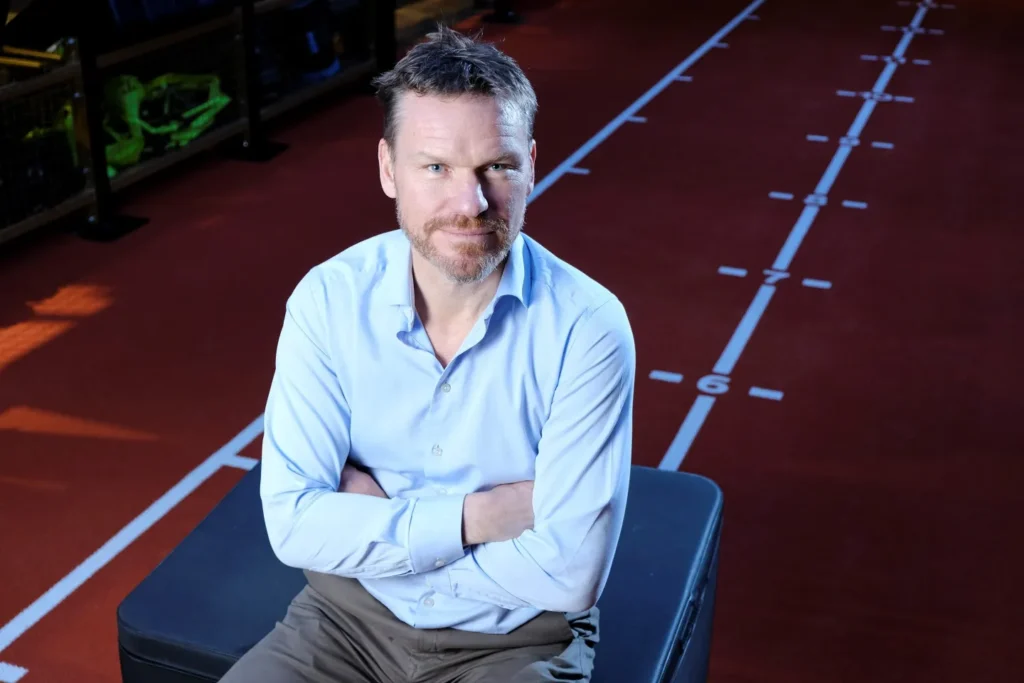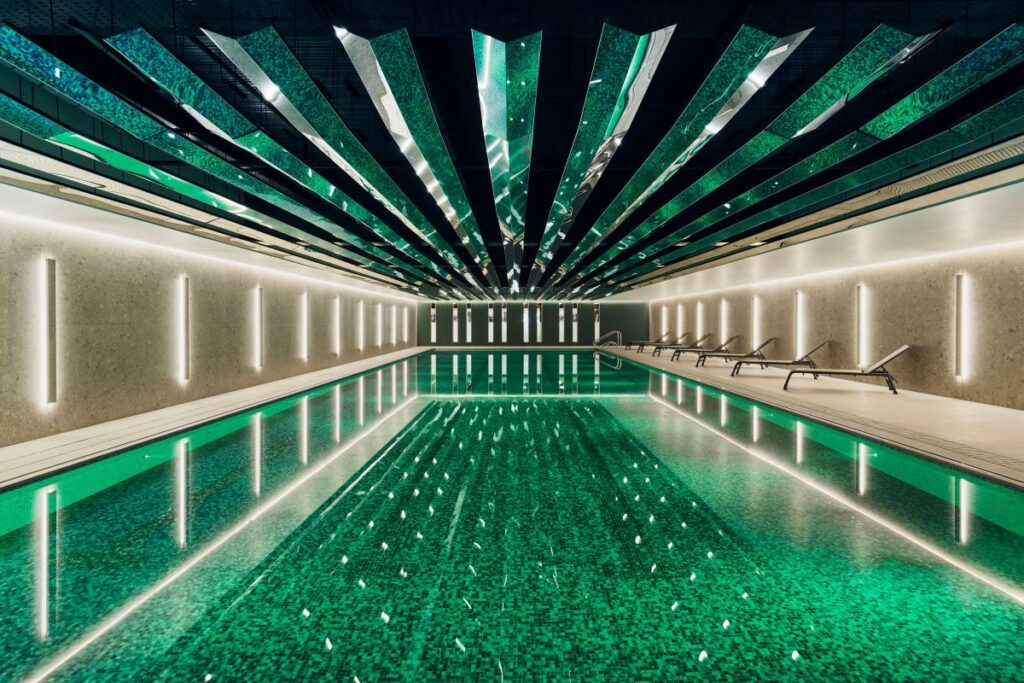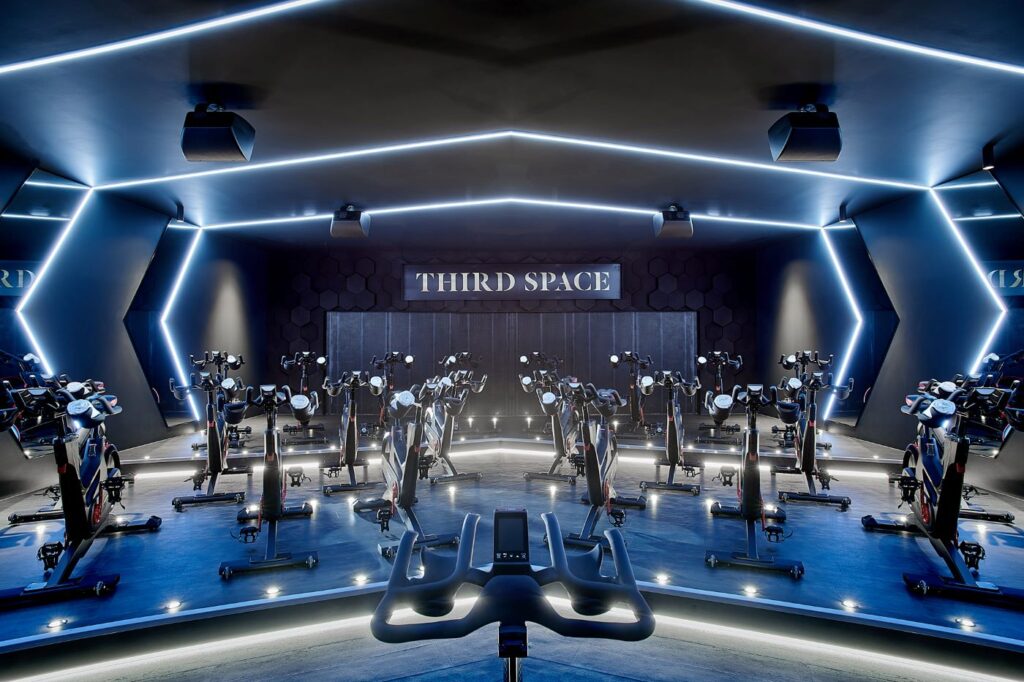The exclusive gymnasium Third Space might be best known for its celebrity clients, including David Beckham and Prince Harry, however it is not just aimed at the ultra-rich and celebrities, in fact, its CEO, Colin Waggettis looking for new locations for its $318-a-month gyms, standing outside train stations and qualifying potential members.
Luxury gyms are targeting millennials willing to pay a higher fee for a bit of luxury, peace and quiet, away from their hectic lives.
Despite the high price of the London-based gym, which varies between $280 and $318 per month, millennials - the generation that says they can't save enough money to get on the property ladder - constitute the majority of Third Space's more than 35,000 members..

"The demographic is primarily young working professionals, living their best life, wanting to complement their work life with being healthy... and managing their stress levels," says Colin Waggett, CEO of Third Space.
"We're not talking about people earning £400,000 ($512,000), but people in the £120,000 to £130,000 ($154,000-$166,000) range; they could be spending 10% of their disposable income with us."
And while the "avocado toast" generation has been relentlessly derided for spending on anything but a deposit on a house, Waggett insists he "couldn't judge that".
Instead, with London consistently ranked as one of the most expensive cities in the world to live in, the former head of Fitness First suggests that millennials are not throwing away potential money for a down payment on a house; they are simply prioritising fitness over other expensive activities.
"Many of our members will be sharing flats with other young working professionals (either in their own situation or in a rented one) and there are not many things you can do in London where you can spend an hour and a half and effectively spend around £20 ($26), which is, when you break it down, what it actually costs per visit."
High-end gyms are in fashion
There are many other gyms that millennials could choose from without the bells and whistles that Third Space offers (e.g. reformer pilates, climbing walls and five different types of yoga) at a reduced price.
Membership in the Pure Gym chain, for example, costs as little as £19.99 ($26) a month. But as Waggett explains, millennials want these luxuries, or as he calls it, "the vibe".
"The analogy I always point to is hotels. You can get a hotel for £25 or you can get a hotel for £800, they all have a bed and a chair and a sink and a shower, but each element is very different and the experience you get is very different," Waggett adds.
"It's the same with us: you go out and think, 'Was it worth the money?' Clearly, the answer is yes because we have so many members and we're growing." Regardless of how members justify the expense, one thing is clear: high-end gyms are all the rage.
Third Space has progressed from its first club in 2001 to 11 in July 2024, with more clubs due to open this year. According to Waggett, the business has "more or less quadrupled in size" in terms of revenue and membership, with several clubs now operating a waiting list.

THIRD SPACE WOODWHARF GYM
Across the pond, Equinox has 41 locations in New York, averaging 43,000 square feet (by comparison, low-end gyms like Planet Fitness average about 15,000 square feet). Meanwhile, the upscale "country club" Life Time started in Minnesota in 1992 and now has more than 170 clubs in the US and Canada.
Among its most recent launches is a 54,000-square-foot "boutique" space in Midtown Manhattan, complete with seven pickleball courts, a coffee shop and so many amenities that it bills itself as "a third space, a home away from home".
Essentially, high-end gyms are no longer just places to exercise: they are lounges, hotels, coworking spaces, childcare centres and more.
The CEO personally seeks new potential spaces
How does Third Space find the perfect place to capitalise on millennials who want a place to unwind after work?
“It is a mixture of science and art"says Waggett, adding that he looks at the hot spots where his core demographic works and lives before personally going to those places to assess their potential. "Then comes the artistic part. You need to see a private property opportunityYou have to see it in the morning, you have to see it in the afternoon, on the weekend, on a sunny day, on a rainy day, you have to see who is coming out of the metro station, who else is trading around here.
"You have to have that gut feeling because these are long-term investments. If you get it wrong, it is extremely costlya mistake you pay dearly for". Waggett isn't just being philosophical about going with your gut about data. The CEO insists that he actually stands outside potential sites in the pouring rain, analysing the quality of people passing by and marking them in his mind as: "member, non-member, maybe member, maybe not".
"If you're signing a 25-year lease, it's worth spending a bit of time making sure you choose the right one," he adds. Of course, like previous generations, even millennials will eventually escape their crowded city flats for a settled life in the suburbs.
But Waggett is not worried about losing customers. If anything, he is betting that this natural life cycle will take place to attract the next generation of luxury gym-goers.
"If you move and go and live in Surrey (the suburbs outside London), we don't have clubs in Surrey, so you won't be a member any more, but the house they moved out of will be occupied by a member of Generation Z now," he adds. "Those changes happen."






